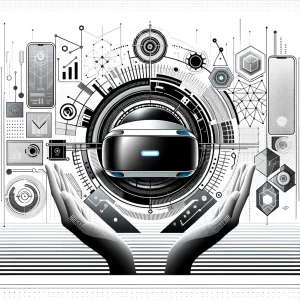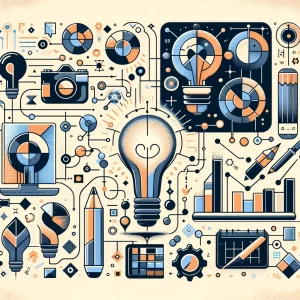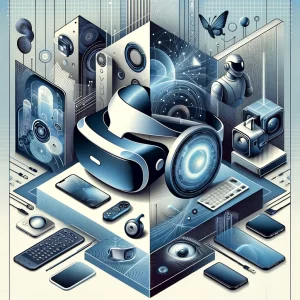
In the age of digital disruption, the frontiers of design are ever-expanding. The fusion of design with cutting-edge technologies, particularly Virtual Reality (VR) and Augmented Reality (AR), is transforming how we create, visualize and interact with our environment.
 First, let’s demystify VR and AR, two technologies reshaping the design industry. While VR provides a completely digital immersive experience, AR overlays virtual objects onto the real world. The confluence of these technologies with design is breaking down the barriers of physical limitations, enabling designers to create immersive designs with breathtaking realism and interactivity.
First, let’s demystify VR and AR, two technologies reshaping the design industry. While VR provides a completely digital immersive experience, AR overlays virtual objects onto the real world. The confluence of these technologies with design is breaking down the barriers of physical limitations, enabling designers to create immersive designs with breathtaking realism and interactivity.
One can find numerous instances where design meets VR/AR. For instance, IKEA’s AR app, IKEA Place, allows customers to visualize how furniture will look in their own homes before making a purchase. Similarly, architects are using VR to create virtual tours of their designs, providing clients with a vivid understanding of the project before it is physically constructed.

However, designing for VR and AR also presents fresh challenges. The creation of believable and comfortable immersive experiences demands an understanding of human perception, physical interaction, narrative, and filmmaking techniques. For many designers, these requirements represent an exciting but steep learning curve.
Looking towards the future, the role of design in VR/AR is set to become even more critical. As these technologies become an increasingly integral part of our daily lives, the demand for designers who can shape these  immersive experiences will continue to skyrocket.
immersive experiences will continue to skyrocket.
As design proverbially shakes hands with innovations like VR and AR, a brave new world of possibilities is unlocked. While the challenges aren’t insignificant, they pale in comparison to the potential benefits these technologies pose to the design industry. Watching this space might well be equivalent to glimpsing into the future of design itself.





